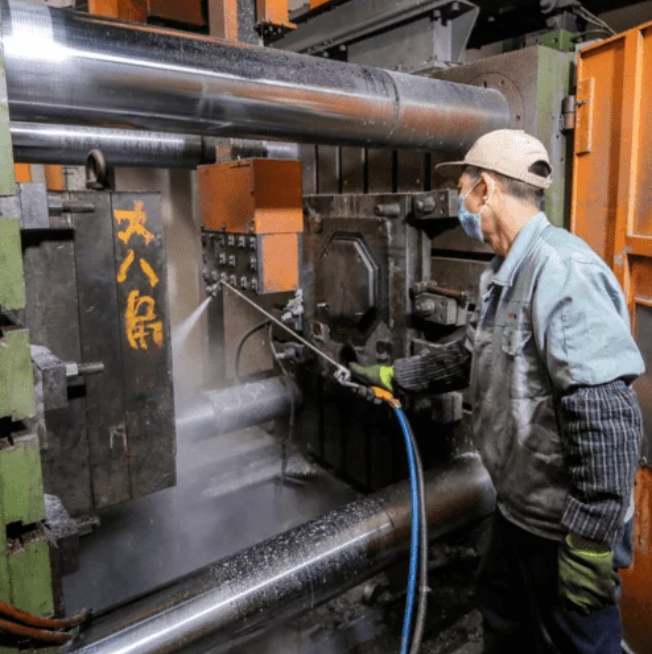Die casting is a widely used manufacturing process that involves the creation of objects by pouring molten metal into a mold cavity. This technique is highly efficient and produces accurate, complex, and high-quality components. In this guide, we will explore the process of die casting and its various applications.
1. Introduction to Die Casting
Die casting dates back to the early 19th century and has since evolved into a preferred method for producing a wide range of products. It involves the use of metal alloys, such as aluminum, zinc, magnesium, and copper, which are melted and then injected into a mold under high pressure. The molten metal fills the mold cavity, and upon cooling and solidification, the desired component is formed.
2. Types of Die Casting
There are two main types of die casting: hot chamber die casting and cold chamber die casting. Hot chamber die casting is suitable for alloys with low melting points, such as zinc and magnesium. In this process, the furnace and the injection system are connected, allowing for a continuous casting cycle. Cold chamber die casting, on the other hand, is used for alloys with high melting points, like aluminum and copper. The molten metal is ladled into the cold chamber and then injected into the mold cavity.
3. The Die Casting Process
The die casting process consists of several stages:
3.1. Tooling Design and Production: The first step involves designing the mold or die, which is typically made of steel. The design must consider factors such as part geometry, draft angles, and parting line location. Once the design is finalized, the mold is manufactured using CNC machining or other techniques.
3.2. Preparation: Before the casting process begins, the mold surfaces are coated with a lubricant to aid in the release of the component. The lubricant also helps to control the temperature of the mold.
3.3. Injection: In the injection phase, the molten metal is injected into the mold under high pressure. The pressure ensures that the metal fills all the cavities and produces a detailed, precise component.
3.4. Solidification: After injection, the metal quickly cools and solidifies within the mold. This solidification process determines the final properties of the component, such as strength and surface finish.
3.5. Ejection: Once the metal has solidified, the mold is opened, and the component is ejected. The excess material, known as flash, is trimmed off, and the component undergoes any necessary post-processing, such as heat treatment or surface finishing.
4. Advantages of Die Casting
Die casting offers several advantages over other manufacturing processes:
4.1. High Efficiency: Die casting is a highly efficient process as it allows for the rapid production of large quantities of components. The cycle time is relatively short, enabling manufacturers to meet high production demands.
4.2. Dimensional Accuracy: Die casting produces components with excellent dimensional accuracy and tight tolerances. The mold design and high-pressure injection ensure consistent results for each cast.
4.3. Complex Geometry: Die casting is suitable for producing components with complex shapes and intricate details. The mold can be customized to replicate intricate features, reducing the need for additional machining or assembly.
4.4. Material Variety: Die casting can be performed with a wide range of metal alloys, providing flexibility in material selection. Each alloy offers unique properties, such as strength, corrosion resistance, or thermal conductivity, allowing manufacturers to choose the most suitable material for their application.

5. Applications of Die Casting
Die casting finds applications in various industries, including automotive, aerospace, electronics, and consumer goods. Common products produced through die casting include engine components, transmission housings, appliance parts, and electronic connectors. The versatility of die casting makes it a preferred choice for manufacturers seeking high-quality, cost-effective solutions.
Die casting is a widely utilized manufacturing process that offers numerous benefits, including high efficiency, dimensional accuracy, and the ability to produce complex components. Understanding the die casting process and its applications can help manufacturers make informed decisions when selecting the best manufacturing method for their specific needs.
-

- OEM high pressure die casting magnesium alloy frame for bicycle
-

- Magnesium alloy foundry parts bicycle frame CNC machining & surface finishing
-

- Bahagian logam tersuai papan tengah macbook dihasilkan
-

- Bahagian&komponen die-casting aloi magnesium untuk e-basikal
-

- CNC machined parts & components
-

- Customized foundry products e-bike components magnesium alloy wheel

 0086-750-5616188
0086-750-5616188 +86 13392089688
+86 13392089688 sales@zhongmei-tech.com
sales@zhongmei-tech.com







